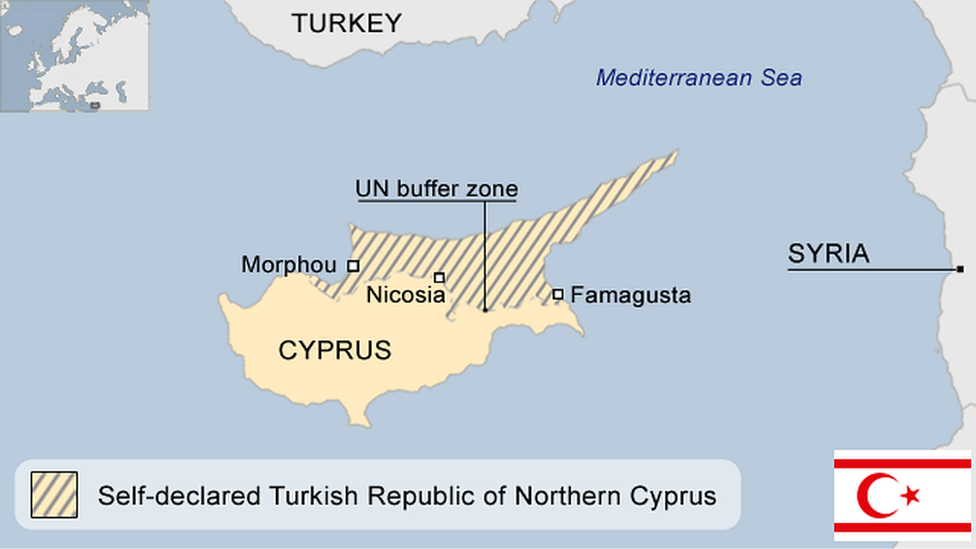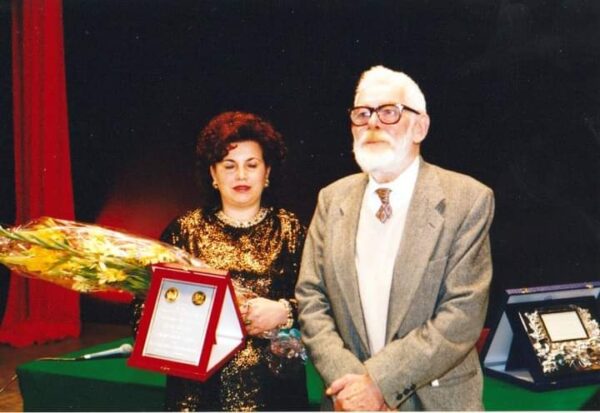Sources: https://gazetedk.online/kuzey-kibris-turk-cumhuriyeti-secimleri-federasyon-iki-devletli-cozum-ve-bolgesel-aktorlerin-stratejik-cikarlari/?fbclid=IwY2xjawNgVM9leHRuA2FlbQIxMQABHocjBoOuXRqZPt6HVktHGgUjm_bOQ-8jqp52OX6Zql3dUT9cYkQpBoyN0VYl_aem_UMm1CdLL_Xg5wFcz5PA8Yw
Author: Sefa M. Yürükel
Oslo, October 18, 2025
The year 2025 is not only an election year in the Turkish Republic of Northern Cyprus (TRNC) ; it is also a turning point in the discussion of strategic directions that will determine the island’s future. The presidential elections are shaped around two fundamental visions: a two-state solution and federative reunification.
The island of Cyprus has been the scene of one of the longest-running political disputes in the Eastern Mediterranean since the mid-twentieth century. The process, which began with the de facto division of the island following the Turkish intervention in 1974, continued with the declaration of the Turkish Republic of Northern Cyprus in 1983, and the state remains unrecognized by the international system. The TRNC’s independent status is recognized only by Turkey, thus maintaining diplomatic isolation (Foreign Policy, 2025).
In this context, the 2025 elections should be considered not only as an administrative choice but also as a strategic juncture that will determine the future of the island.
The elections to be held in 2025 are witnessing a rivalry between two main political strands. While current President Ersin Tatar advocates a strategy of full integration with Turkey, centered on the „two-state solution” thesis, opposition leader Tufan Erhürman and the Republican Turkish Party (CTP) are promoting the goal of a „bi-communal, bi-zonal federal solution” (EUobserver, 2025) . These two approaches are interpreted not only as political choices but also as indicators of the Turkish Cypriot community’s future identity orientation.
The election atmosphere has been further complicated by energy and security developments in the Eastern Mediterranean after 2023. Israel, Greece, and Southern Cyprus’ energy corridor plans; Turkey’s maritime jurisdiction policies; and the military base activities of the US and UK clearly demonstrate that the elections are not merely a local contest (Reuters, 2025) . Therefore, the election process requires a multi-layered analysis in terms of both domestic political discourse and international strategic balances.
Political Background and Election Dynamics in the TRNC
The TRNC’s political structure is heavily influenced by historical ties with Turkey and external interventions. Since its declaration of independence in 1983, the country has been governed through democratic election processes (Cyprus Report, 2025).
The National Unity Party (UBP), led by Ersin Tatar, has been in power since 2020 and maintains its „two-state solution” approach in line with Turkey’s official foreign policy. Ankara’s political support and economic aid strengthen Tatar’s position, but this has been criticized by the opposition as „political dependency” (Cyprus Mail, 2025). The opposition, particularly led by the CTP , advocates integration with the European Union (EU) and the resumption of the federal negotiation process.
In terms of electoral dynamics, 2025 represents a period of deepening social polarization. Surveys by research organizations such as CMIRS and GENAR indicate that approximately 40% of voters are undecided (CMIRS, 2025) . This rate is considered a critical factor that will determine the election outcome. Furthermore, it is noteworthy that young voters, unfamiliar with the past, tend to favor a federal solution, while rural and older voters, who know history firsthand, gravitate toward a two-state structure.
Polarization is also evident in the media landscape. While a two-state discourse is prominent, influenced by Turkey-based media outlets and some media outlets in the TRNC that favor a two-state solution, other local media outlets adopt a more federative stance. This asymmetric media environment demonstrates that the election process is fiercely contested (EUobserver, 2025).
Federation and Two-State Solution Approaches
The Cyprus issue has been debated since the 1960s through the principles of „federation” and „bi-communal governance .” The 2004 Annan Plan process deepened this debate; the Greek Cypriot side’s rejection of the plan and the Turkish Cypriot side’s acceptance, yet the failure to achieve unification, shaped the future of the island (Annan Plan Report, 2004). This rupture led to a „weakening of hopes for a federation” among the Turkish Cypriot public, which was pro-Western.
Drawing on this historical experience, Ersin Tatar and his supporters argue that the idea of a federation amounts to „surrendering to the Greek Cypriot side’s desire for sovereignty .” According to Tatar, a two-state model is the only sustainable solution for both peace and mutual respect on the island (Cyprus Mail, 2025). This approach also parallels Turkey’s „Blue Homeland” doctrine in the Eastern Mediterranean .
In contrast, CTP leader Tufan Erhürman and pro-federation groups argue that a bi-communal federation is the most rational option in terms of both international „legitimacy” and economic development. Erhürman argues that a federal solution, including the TRNC within the European Union, could end its economic isolation in the long run (EUobserver, 2025).
The difference between these two approaches is not merely a diplomatic choice; it represents a redefinition of the concepts of identity, belonging, and sovereignty. While the two-state solution is characterized by themes of independence, Turkish identity, and security, the federative solution seeks to gain „legitimacy” through integration with the West and international recognition .
The Roles of Türkiye, Greece and the Greek Cypriot Administration
Since 1974, the primary priorities in Turkey’s Cyprus policy have been the protection of its guarantor status and the security of the Turkish Cypriot community. However, after the 2000s, Ankara’s policy has shifted from being solely security-centered to encompassing geopolitical and energy security, reflecting new geopolitical developments. Turkey aims to position the TRNC as a legitimate party in the sharing of hydrocarbon reserves and maritime jurisdictions in the Eastern Mediterranean (Foreign Policy, 2025). In this context, the two-state solution model is not only a political proposition for Turkey but also a leveraged tool in energy diplomacy.
Turkey’s influence on the TRNC continues through economic aid, citizenship policies, and media channels. Direct financial assistance from Turkey to the TRNC reached 4.5 billion TL in the 2024–2025 period, equivalent to approximately 25% of the TRNC budget (Cyprus Report, 2025) . This high economic dependence is considered by the opposition as „erosion of sovereignty ,” while the government justifies it as „national and fraternal solidarity.”
From Greece’s perspective, Cyprus has historically been seen as an „incomplete piece of Hellenism .” In the post-1974 period, Greece has preferred to exert influence through diplomatic and EU mechanisms rather than direct military intervention. Athens, while advocating a federative solution, considers the two-state approach contrary to „international law” (EUobserver, 2025) . However, the Cyprus issue has also created an ideological fault line in Greece’s domestic politics between the pro-Turkish nationalist and pro -US/EU factions.
Meanwhile, the Greek Cypriot Administration (Republic of Southern Cyprus) , leveraging its international recognition, has strengthened its strategic cooperation with the EU and the US. Between 2023 and 2025, the Greek Cypriot administration became a key player in Eastern Mediterranean energy diplomacy by granting energy exploration licenses to multinational companies such as Total, ENI, and ExxonMobil (Reuters, 2025). This process was perceived as an „exclusion” by both the TRNC and Turkey , further solidifying the case for a bilateral solution.
Strategic Interests of the US, UK and Israel
US interests in Cyprus are primarily based on the NATO balance and Eastern Mediterranean energy security, as well as weakening Turkey’s power in the region. With the „US-Cyprus Security Agreement,” signed in early 2025 , Washington increased cooperation with the Greek Cypriot side in military training, intelligence, and defense modernization (Reuters, 2025). With this step, the US aims to limit both Russian and Turkish influence in the region and bolster the Israel-Greece-Cyprus triangle. However, Washington does not openly support the idea of a two-state solution, continuing to advocate for the principle of a „federative solution based on UN parameters.”
The United Kingdom maintains a permanent strategic presence on Cyprus thanks to its bases in Akrotiri and Dhekelia. These bases serve as logistics hubs for NATO and the European security network (UK Government, 2025) . While the UK’s official stance appears neutral, London’s priority is „maintaining stability.” Therefore, while the UK appears to be taking no clear side in the election results, it supports the idea of a federation; however, it has stated that it is prepared to act as a „mediator” in the event of potential instability.
Israel’s influence on Cyprus is particularly evident in the energy, defense, and intelligence sectors. Israeli naval training activities in the ports of Larnaca and Paphos, along with energy sharing agreements and joint exercises signed along the Tel Aviv-Nicosia line, have positioned the Greek Cypriot side at the center of the Eastern Mediterranean energy corridor (Knews, 2025) . From Israel’s perspective , the TRNC is a force capable of counterbalancing Turkey’s military and energy influence. Therefore, Tel Aviv supports the idea of a federal solution through cooperation with the Greek Cypriot side.
The common denominator of these three countries (the US, UK, and Israel) is their preference for an order that limits Turkish influence in Cyprus and the region. This creates an indirect environment of international pressure in the TRNC elections and provides active support in the West for candidates with a federative stance (Foreign Policy, 2025).
Current Election Atmosphere and Analysis with Data
The 2025 election atmosphere has been shaped by uncertainty and discussions of foreign interference. According to CMIRS ‘s October 2025 survey, 48% of voters highlighted „Turkey’s indirect influence on the elections.” Meanwhile, the GENAR poll shows Tatar receiving 42% and Erhürman receiving 38% of the vote, increasing the likelihood of a second round (KıbrısRaporu, 2025).
Two main themes emerged in the election campaigns: „sovereignty and economic stability.” While the Tatar wing promised security and prosperity with its rhetoric of „full harmony with Turkey, national identity, and a strong state,” Erhürman and the CTP emphasized economic integration with promises of „EU funds, investment, and free movement .” In this context, the electoral competition is not only ideological but also a competition of economic visions (EUobserver, 2025) .
Media analysis reveals a polarized information landscape during the election process. While national media outlets based in Turkey and the TRNC support the two-state thesis, some local newspapers are discussing the possibility of a federation. The widespread sharing of „federal hope” -themed content on social media platforms, particularly among young voters, is noteworthy (CMIRS, 2025).
International observers stated that the election atmosphere was consistent with the principles of democratic competition and that there were equal opportunities for propaganda. However, the Council of Europe Election Observation Mission called on the TRNC to address „the distribution of media resources and financial transparency.”
Possible Election Results and Political Scenarios
Scenario 1: The Triumph of the Two-State Approach
Ersin Tatar ‘s re-election would mean the perpetuation of the two-state solution thesis. In this case, Turkey-TRNC integration would deepen further, and Ankara’s military, economic, and geopolitical influence would increase. However, this development would further strain relations with the EU and the Greek Cypriot administration, virtually eliminating the possibility of international recognition (Foreign Policy, 2025) . Furthermore, supporters of a federative solution would face the risk of marginalization in domestic politics.
Scenario 2: Pro-Federation Candidate Victory
A victory for Erhürman or a candidate with similar stances could revitalize the exhausted negotiation process. With the support of the EU and the UN, bi-communal talks could resume (EUobserver, 2025) . While this scenario might facilitate the TRNC ‘s integration and potential dependence on the West in the long term, it could also create economic and political turbulence in the short term.
Scenario 3: Contentious/Uncertain Outcome
If the election goes to a second round or ends in a very close result, political coalition negotiations and external pressures will be decisive. This could intensify debates about democratic legitimacy and weaken public confidence. Such an outcome could deepen domestic instability and negatively impact international investments (Cyprus Report, 2025).
Scenario 4: Post-Election Reconciliation Process
The possibility of both sides forming a „national consensus government” that would reduce post-election polarization is also being discussed. Such a model could provide a balanced foreign policy stance, but it would be challenging for both sides’ bases. While the international community may welcome such a compromise, it is clearly evident that domestic politics is not ready for it.
Conclusion and Evaluation
The 2025 TRNC elections constitute one of the most critical turning points in the island’s history. The election represents not only a change of government but also a determination of the Turkish Cypriot community’s future direction: independence or „integration” with the West . While the two-state solution vision promises security and political stability, a federal solution ensures dependence on the West and distances itself from the Republic of Turkey.
However, both scenarios carry costs. Therefore, the path to a sustainable solution lies in building mutual trust between the Republic of Turkey and the TRNC, and the Greek Cypriot Administration of Southern Cyprus and Greece, strengthening diplomatic mechanisms, and achieving a two-state solution through international agreements. Indeed, even within the framework of the Annan Plan, the Greek Cypriot Administration has consistently supported a two-state solution, not unification.
When evaluated at a macro level, the Cyprus issue is not merely a „two-community” issue; it is also a reflection of the Eastern Mediterranean energy competition and regional balance of power. When the interests of actors such as the US, the UK, and Israel combine with the historical positions of Turkey and Greece, the Cyprus elections become a piece of a global chessboard.
Ultimately, regardless of the outcome of the 2025 elections, mutual recognition, confidence-building measures, and a balanced mediation role by the international community are essential for achieving lasting peace on the island. In the long term, not only political solutions but also economic interdependence and cultural dialogue will be key components of the peace process.
Source:
Annan Plan Report. (2004). United Nations peace plan for Cyprus.
UKGovernment. (2025, July). Sovereign base areas and bilateral arrangements.
Reuters. (2025, January). Biden boosts security ties with Cyprus through security memorandum.
Cyprus Mail. (2025, September). Ersin Tatar’s campaign and two-state vision.
EUobserver. (2025, October). This weekend’s election in a European country no one notices.
Foreign Policy. (2025, October 8). Turkish Cypriots go to the polls. Will it matter?
CyprusReport. (2025, October). Comparison of CMIRS and GENAR surveys.
Knews. (2025, October). Israel–Cyprus defense cooperation and energy developments.
CMIRS. (2025). Voter trends and public opinion research report.
© 2025, DetectivPress. Toate drepturile rezervate.




